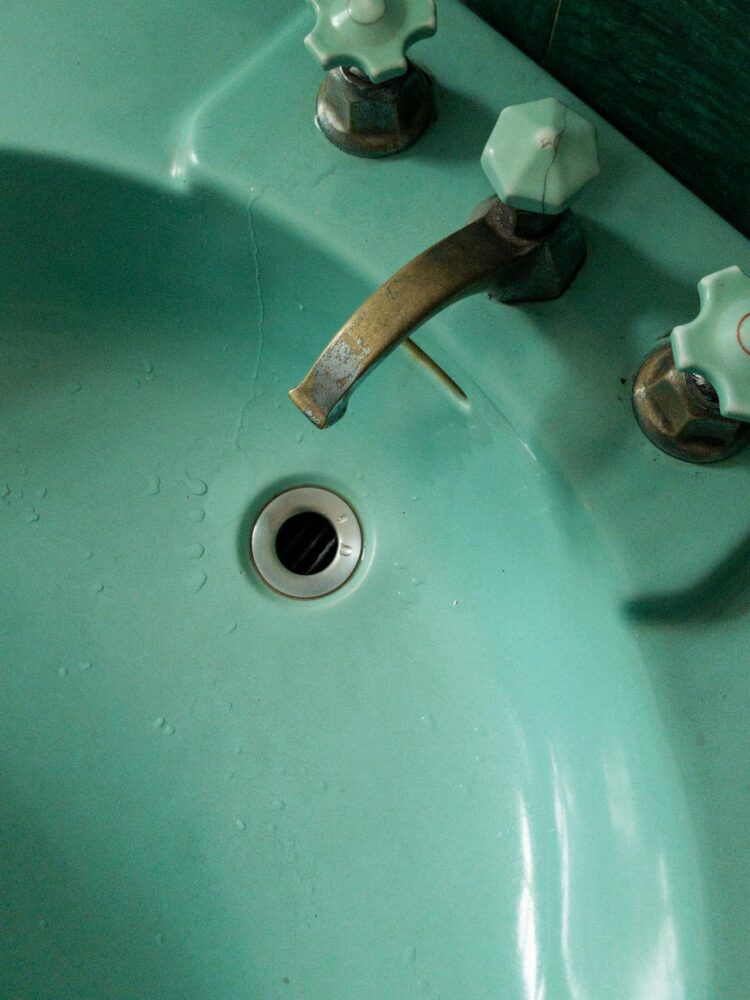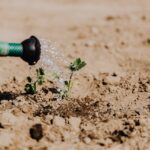Is Your Drinking Water Safe? Signs Your Water Might Be Contaminated

Ever had a glass of water that tasted… off? It might have looked crystal clear, but could it be hiding something harmful? Drinking contaminated water is more common than you think. Knowing the warning signs could save you from potential health issues.
Water is life. Every day, we rely on it for drinking, cooking, and cleaning. But just because it’s clear, doesn’t mean it’s clean. Now that’s where we at Aqua Maya come in. We are committed to bringing clean, safe and sustainable water solutions to communities in West Africa.
Contaminated water can sneak into our homes without us even noticing, leading to serious health problems. Safe drinking water is something we often take for granted, but it’s crucial to stay aware of any changes in your water’s taste, appearance, or smell.
If you’ve ever wondered whether the water you’re drinking is safe, you’re not alone. Let’s explore the common signs that tell your drinking water might be contaminated and what you can do to protect yourself.
Signs to watch for
1. Odd Taste or Smell
One of the first red flags of contaminated water is a change in taste or smell. If your water has a metallic, salty, or chemical-like taste, there’s a chance it’s been contaminated by harmful substances like lead, chlorine, or industrial chemicals. Sometimes, a rotten egg smell might point to sulphur, which though unpleasant, isn’t necessarily dangerous but still needs attention.
2. Discolouration
While clean water should be clear, discoloured water is a strong sign that something is wrong. If your water appears yellow, brown or has a rusty tint, it might be a sign of contaminants like iron, manganese, or even bacteria. A green or blue hue could indicate copper contamination, which can come from corroded pipes.
3. Cloudiness
Cloudy water, also known as “turbidity,” means there are particles floating in your water. This can be due to soil runoff, sediment, or even microscopic organisms. While not all cloudy water is harmful, it’s always best to avoid drinking it until it’s been tested.
4. Slippery Feel
Water should feel refreshing and clean. If your tap water feels slippery or slimy, it could indicate an excess of minerals like calcium or magnesium, which might point to hard water. While hard water isn’t a health hazard, it can be tough on your skin, hair, and appliances.
5. Sediment in the Water
If you notice bits of dirt or particles at the bottom of your glass or in your sink, your water may be carrying sediment or rust from old pipes. Sediment can also come from underground sources, like eroded soil, which might be a sign of poor filtration or pipe damage.
6. Frequent Illness
If you and your family are constantly battling gastrointestinal issues like diarrhoea, vomiting, or stomach cramps, your water might be the culprit. Microorganisms such as bacteria, viruses, and parasites can find their way into your water supply, causing frequent bouts of illness.
7. Lead Exposure
Lead is a sneaky contaminant because it’s invisible, odourless, and tasteless. It often enters drinking water through the corrosion of old pipes. Long-term exposure to lead can cause serious health problems, especially in children and pregnant women, leading to developmental delays, learning disabilities, and other health issues.
8. Stains on Fixtures, Appliances or Clothing
If you start noticing strange stains on your dishes, laundry, or fixtures, your water might contain an excess of minerals or chemicals. Orange or brown stains usually point to iron, while blue-green stains might indicate copper.

9. Changes in Water Pressure
A sudden drop in water pressure might be more than just a plumbing problem. It could mean that something’s wrong with your water supply, like a blockage in the pipes caused by rust or mineral buildup, or worse—damage to the local water system.
10. Unexplained Odour in the House
Sometimes, contaminated water isn’t obvious in taste or colour, but it can still release an odour in your home, especially around sinks, faucets, or toilets. The smell might not even come directly from the water but from what’s building up in your plumbing as a result of contamination.
What Can You Do If Your Water Is Contaminated?
So, what should you do if you notice any of the signs mentioned above? First, don’t panic. Here are some steps you can take:
- Get your water tested: This is the most reliable way to know if your water is contaminated and to what extent.
- Install a water filter: Depending on the type of contamination, a simple home filter could solve your problem.
- Consider bottled or boiled water: If contamination is severe, avoid using tap water for drinking or cooking until it’s declared safe.
How to Test Your Drinking Water
Testing your water is the best way to know for sure if it’s safe to drink. While water contamination can sometimes be obvious (discolouration, bad smell, etc.), other times it’s invisible and undetectable without proper testing. Here’s a simple guide on how to test your drinking water and make sure it’s safe for you and your family.
1. Use Your Senses for a Quick Check
Before deciding on using testing kits and labs, use your basic senses:
● Smell: Does your water smell like chlorine, sulphur (like rotten eggs), or anything unusual?
● Taste: Does your water taste metallic, bitter, or otherwise strange?
● Look: Is the water cloudy, discoloured, or has particles floating in it?
These are early warning signs that something might be off, but for a more accurate assessment, you’ll need to test the water properly.
2. Buy a Home Water Testing Kit
Home water testing kits are widely available and easy to use. These kits can test for common contaminants like bacteria, lead, chlorine, nitrates, pH levels, and more. Here’s how to use one:
● Step 1: Buy a kit from a reputable store or online retailer.
● Step 2: Follow the instructions. Typically, you’ll fill a small container with a sample of your tap water.
● Step 3: Use the included strips or testing solutions. These might change colour based on the presence of specific contaminants.
● Step 4: Compare the results to the colour chart provided in the kit.
These kits can provide a good baseline but may not detect all possible contaminants, especially at very low levels.
3. Send a Sample to a Certified Lab
For a more thorough and accurate test, you can send your water to a certified lab. This is a great option if you’re worried about serious contamination, like lead or harmful bacteria, or if you live in an older home with outdated pipes.
● Step 1: Contact a local water testing lab. Many labs will send you a sample collection kit.
● Step 2: Collect a water sample according to the lab’s instructions. This usually involves filling a sterile bottle or container with tap water.
● Step 3: Send the sample back to the lab and wait for your results. These tests can take a few days to a couple of weeks, but they are much more detailed than home kits.
Some labs can test for hundreds of potential contaminants, from heavy metals like arsenic and mercury to pesticides and industrial chemicals.
4. Visit Your Local Water Board
If you’re connected to a public water supply, you can visit your local water board to find out what’s in your water. For instance, if you’re in FCT Nigeria, you can visit the FCT Water Board.
5. Test Well Water / Borehole Water Regularly
If your home relies on well water or borehole water, it’s crucial to test it regularly because it’s not treated or monitored by the city. Well water can be contaminated by runoff, industrial waste, or even naturally occurring substances like radon or arsenic.
● Step 1: Test your well water at least once a year. You can use a home kit for a basic test, but sending it to a lab will give you the most accurate results.
● Step 2: If you notice any sudden changes in taste, colour, or odour, test your well or borehole water immediately.
6. Hire a Professional
If you’re unsure about using a home kit or need a comprehensive test, consider hiring a professional water testing service. A technician can come to your home, collect samples, and perform on-site testing or send the samples to a lab for you. This is especially helpful if you’re facing ongoing issues with your water supply.
Common Contaminants to Test For:
● Lead: Particularly common in older homes with lead pipes or fixtures.
● Bacteria: Such as E. coli, which can cause severe illness.
● Nitrates: Come from fertilisers or septic systems and can be harmful to infants.
● Chlorine: Often added to public water supplies to disinfect, but too much can be harmful.
● Heavy Metals: Like mercury, arsenic, and cadmium, often from industrial runoff.
● Pesticides: Found in water near agricultural areas.
Conclusion
Whether you use a simple home testing kit or send samples to a professional lab, understanding the quality of your drinking water is essential for protecting yourself and your family from potential health risks. Regular testing, especially if you notice anything unusual, ensures your water is safe for daily use. The water you drink every day is as important as life itself. Pay attention to the signs of contamination and take quick action. Be informed, stay safe, and always make sure the water you drink every day is truly clean.
References:
1. Kinetico. 2024. Common Water Problems. https://www.kineticonorthernmichigan.com/what-we-do/common-water-problems/
2. Copper Development Association Inc. 2024. Why Do I Have Blue/Green Staining of My Bathroom Fixtures?https://copper.org/applications/plumbing/techcorner/staining_bathroom_fixtures.php
3. WHO. 2023. Radon. https://www.who.int/news-room/fact-sheets/detail/radon-and-health
4. WHO. 2022. Arsenic. https://www.who.int/news-room/fact-sheets/detail/arsenic
5. WHO. 2017. Chemical Safety and Health – Mercury. https://www.who.int/teams/environment-climate-change-and-health/chemical-safety-and-health/health-impacts/chemicals/mercury
6. WHO. 2017. Chemical Safety and Health – Cadmium. https://www.who.int/teams/environment-climate-change-and-health/chemical-safety-and-health/health-impacts/chemicals/cadmium






